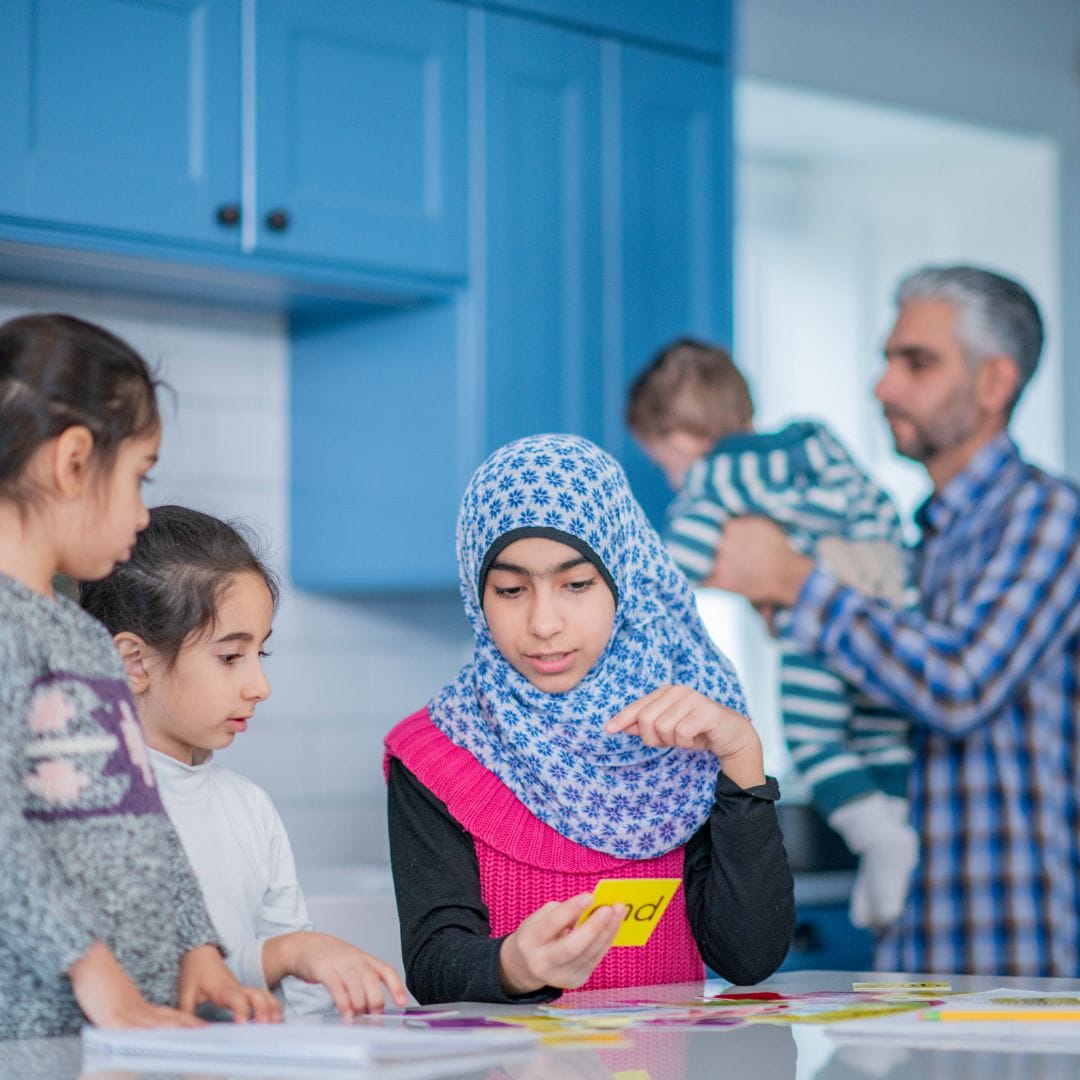This post is written by Sandra Castro, a Program Coordinator for the J. Orin Edson Entrepreneurship + Innovation Institute’s Youth Entrepreneurship team. In her role, Sandra provides support to middle school educators facilitating the Verizon Innovative Learning Program which provides STEM educational opportunities for Title I middle schools. Sandra comes from a migrant, bilingual family from which she learned the importance of education and developed a love for learning at a young age.
Growing up, did you find yourself in a situation where a teacher was asking you a question and you did not understand what they were saying?
You look around the class to see your peers staring at you intently and you can feel a sense of urgency overtake your body.
In most cases, you would simply shake it off and ask the teacher to repeat the question, right?
But imagine being in this situation and not understanding what the teacher was asking because you did not speak the language. A situation that may be all too common for a group of students in our classrooms, students referred to as English language learners (ELLs). According to the National Center for Education Statistics, as of fall of 2018, around 5 million students in US classrooms are ELL students (NCES 2021).
The Youth Entrepreneurship team here with the J. Orin Edson Entrepreneurship + Innovation Institute at Arizona State University focuses on bringing STEM (science, technology, engineering, and math) education opportunities to underrepresented communities. One of the goals of the curriculum developed by this team is to provide that point of entry to STEM for young learners.
As a result, this team introduces students to career paths and opportunities they may not have explored otherwise. In knowing that ELL students make up a part of these communities served, it is also important to highlight how these students can thrive in these spaces and further on in STEM careers.
English language learners bring unique insights to our classrooms. They come from different cultures, may originate from different countries and with that, bring various life perspectives than that of American culture. Some may see these differences as obstacles for thriving in the classroom, but these perceived barriers can be leveraged as catapults for success.
As the educators and adults in the room, we can look at ELL students that may feel out of place and turn their unique perspectives into opportunities for success in the classroom. There are certain factors that ELL students bring and that could help propel them to be successful in STEM. Factors like diversity, resourcefulness and backgrounds that emphasize community are unique qualities that can help these students thrive in STEM.
Cultural Richness
According to the National Center for Education Statistics, there are about 10 different languages that are considered the predominant language in the households of ELL students in American classrooms (NCES 2021). While being introduced to a different culture at a young age can bring a bit of culture shock for some, the reality that ELL students bring a culturally diverse perspective into our classrooms is a fact and a positive attribute that we can help them embrace. Within STEM, it has been proven that different ways of thinking and unique perspectives breed fresh ideas and solutions.
The National Academies of Sciences, Engineering, and Medicine states, “The identities of students that are established through their home language and culture are legitimized in the STEM classrooms as foundations for meaningful learning, and likewise, they are supported in developing a sense of their place and voice in tackling real-world issues” (National Academies of Sciences, Engineering, and Medicine. English Learners in STEM Subjects: Transforming Classrooms, Schools, and Lives. 2018). By showing these students that the richness of their culture can be an asset to their STEM experiences, we can help empower students through their cultural identities and as a result, they might gain more confidence in the STEM space and within themselves. With the curriculum developed by the Youth Entrepreneurship team, students are empowered to develop a variety of projects based on their interests, passions, and backgrounds. Curriculum assignments allow students to create projects that tie in STEM and design thinking concepts while bringing their unique perspectives into the work with autonomous development and choice.
We must remember that when it comes to finding solutions, creativity and thinking outside of the norm is how we produce great ideas.
A Community Perspective
Growing up as an English language learner, one of the largest components of my upbringing was the sense of family and how our individual actions affected the family unit. I know that my experience may not be shared by all ELL students but, English language learners tend to come from places where there is a large emphasis on community.
This can refer to the larger cultural community that they may be a part of, or the community that surrounds them as family. Constantly having that focus on family is something that is engrained in young ELL students and that can translate to being empathetic to the global problems that are tackled in the STEM field. NASEM states, “Additionally, their affinity for… communal responsibility may be related to the goal of civic engagement.” (National Academies of Sciences, Engineering, and Medicine. English Learners in STEM Subjects: Transforming Classrooms, Schools, and Lives. 2018). Having a strong sense of community can be a beneficial trait in the field of STEM as the field often looks at global problems or large community complexities to undertake.
In looking for solutions to global problems a perspective of “for the greater good” could be just the right mindset to lead a STEM thinker down the path of discovery. Coming into the STEM field with the mindset of “How can I help solve a problem affecting a collective group?” is what young, ELL students might experience within their family unit. Embracing this mindset of community and working towards collective progress, is another advantage that these students can bring.
Beacons of Ingenuity
It has been said time and time again, “necessity is the mother of all invention.” When you have no one giving you all the resources and solutions, you look at your surroundings and figure out how to work with what you have. In some instances, ELL students can come from communities and cultures where you recycle something from its initial purpose into something else. This type of upbringing can lead on to think in a more sustainable manner.
We can see a shining example of this in the book, The Boy Who Harnessed the Wind. In this book we learn the story of William Kamkwamba, a young Malawian boy who through dedication, his passion for learning and the need to help his family, engineers a wind turbine from reading books on electricity and tinkering with old electronics. This incredible story is a clear example of how the combination of necessity and imagination can spark ingenious solutions to grand problems.
The curriculum developed by the Youth Entrepreneurship team proudly embraces these concepts. In teaching young learners about sustainability, empathizing with others and prototyping through design thinking, not only does it expose learners to these themes, but it also empowers them to solve real-life problems and how they can be a part of future solutions.
It is this type of creative idea that some of our ELL students can bring into our classrooms and that we can help nurture to bring that key “out of the box” thinking necessary in the STEM field. Leaning into some of these traditional teachings of “working with what you have” can really put young ELL students a step ahead in STEM.
Future Champions in STEM
By offering opportunities that allow the power of exploration and growth, we provide a space for young learners to thrive beyond what they may have imagined for themselves. By leaning into the diversity, resourcefulness, and community mindset, that ELL students could bring into STEM, we can forge the path for a new group of STEM victors.




